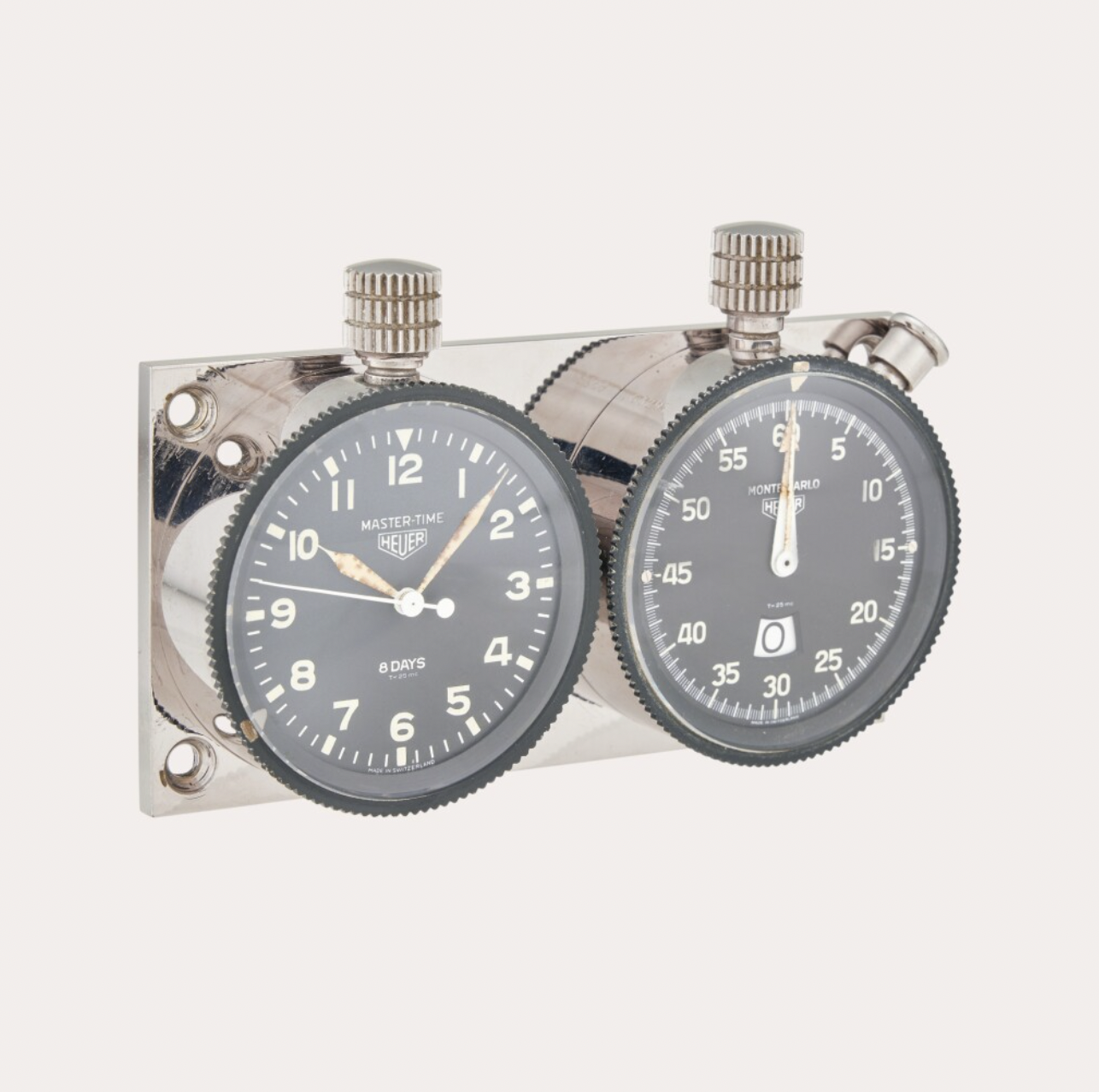Steel Dashboard-Mounted Rally-Master, A Master Time 8 Day and Monte-Carlo stopwatch, Circa 1968
There are few collections that tell the history of Heuer in a more succinct way that the Rally Master. In 1911 the company would present the world’s first dashboard timer, the Time of Trip, that would find applications in aviation and motoring. In 1933 the Autavia would arrive with more compact dimensions allowing for an even broader array of applications.
Then in 1958 the selection of dashboard timers would take a step forward with the presentation of the Master Time 8-day clock and the Auto-Rallye chronograph. By separating the time and recording functions onto two separate dials, it dramatically improved the readability of the two distinct pieces of information. Furthermore, the Auto-Rallye had two center recording hands for seconds and minutes, meaning no need for trying to decipher small subsidiary dials in a car at high speed.
The Auto-Rallye would evolve into the fittingly named Monte-Carlo, which added an innovative hour counter that was displayed in a window on the dial, thanks to a module developed by Dubois-Depraz. The combination of the Master-Time and Monte-Carlo would quickly become the de facto choice for rally cars, making notable appearances in a whole host of cars including the 1965 Porsche 911 driven by Herbert Linge and Peter Falk in the Monte Carlo Rally that year.
Today the Rally Master represents the ultimate cockpit accessory, whether it is Ferrari, Lamborghini, Porsche or even Mini, a whole honest of marques have been offered with the sets, but it is particularly the sports cars from Stuttgart which have become most well known for featuring the Heuer timers. No 911 can really be considered complete without them…




